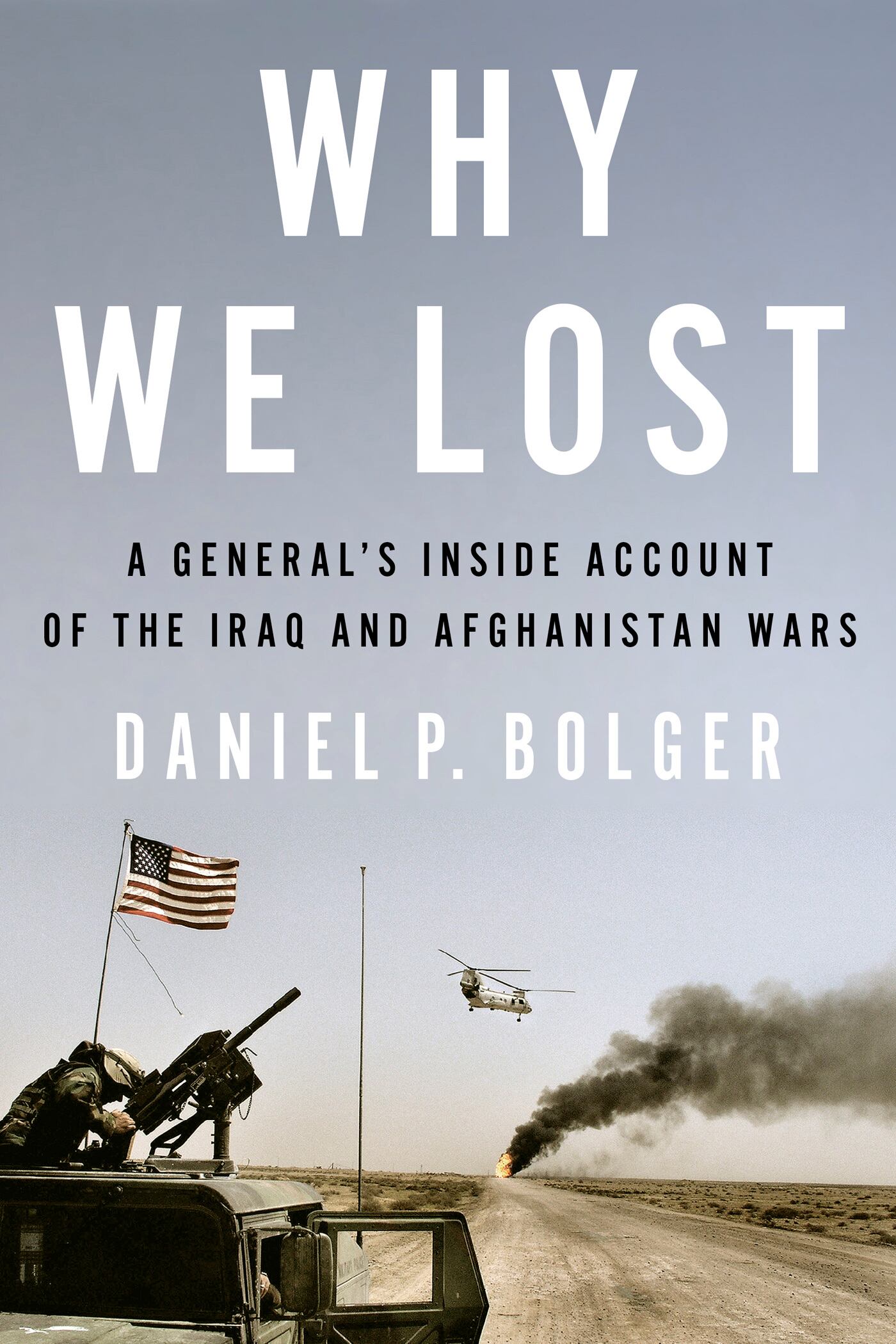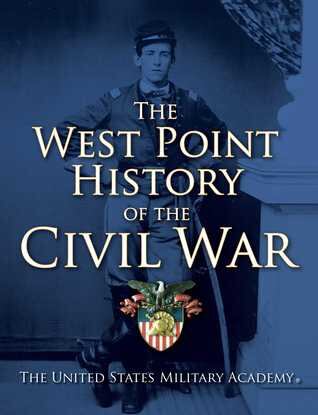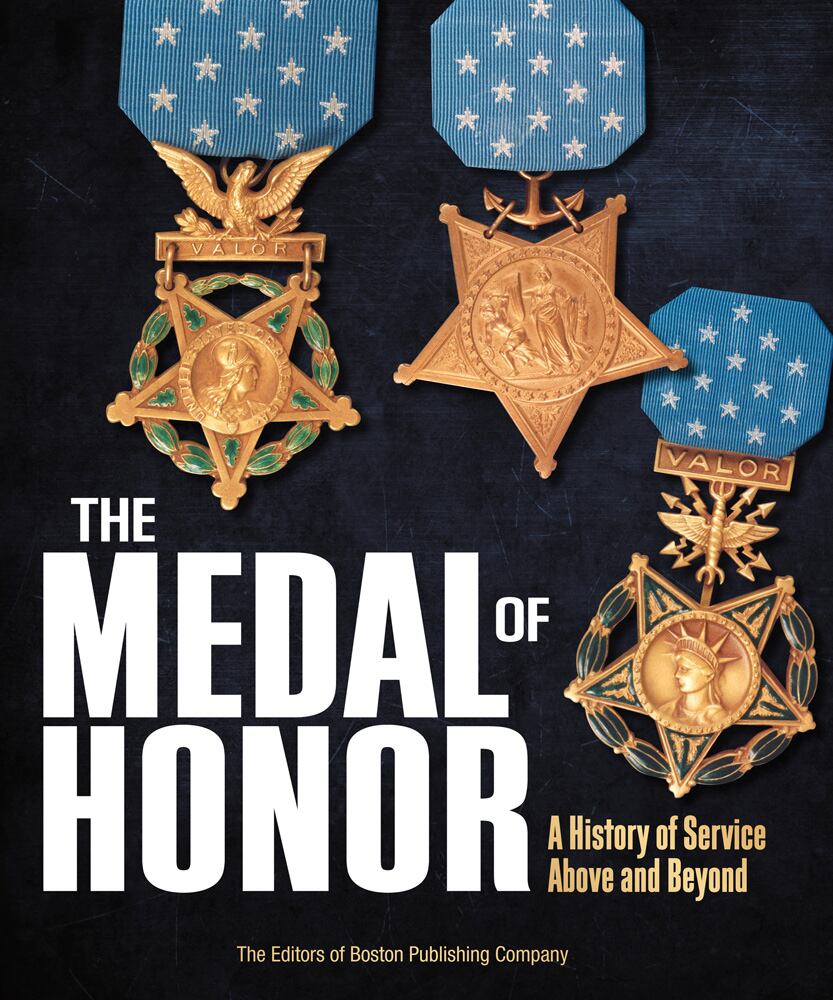Topics of recently published books cover what went wrong in Iraq and Afghanistan and what went right, and how to learn from each. Two SEALs return, and two more SEAL books tell the untold. Two titles tell of Rangers finding the way on patrol and on the road. A few could make imposing coffee-table gifts, collections of images of valor, Vicksburg and Vietnam. In time for holiday shopping, here's Military Times' guide to titles you might want to give or receive — and in a couple of cases, return.
If Iraq is the bad war and Afghanistan is the good war, how and why does "the West's grand experiment" go bad?
The British journalist now with Bloomberg News offers distinctive answers, refreshingly from the other side of the Atlantic, but this reason stands out for clarity and concision: "No one stood back and examined the counterinsurgency approach or the wisdom of America's almost inevitable march toward an Iraq-style surge in Afghanistan."
This smart, well-researched and well-written analysis explains how "the world's most powerful leaders plotted to build a new kind of nation in Afghanistan that was pure fantasy."
Fantasy plus fiasco. The effort by NATO is "a medley of nations, competing national prerogatives, cavalier egos, and political calculation, with only a cursory knowledge of one another's military systems," and the U.S. military sees the Taliban "as a monolithic entity."
Individuals fare no better. Britain's chief strategic defense planner sees Afghanistan as a critical "opportunity to secure the British military standing in the world." Gen. Stanley McChrystal appears "strikingly naive when it came to manipulating public perception" from the Oval Office to magazine racks. British Prime Minister David Cameron and President Obama each want "to avoid taking ownership of the war." Hamid Karzai's career appears "to have peaked in 1992," and before 9/11 Karzai was "preparing to fly from Pakistan to Baltimore to join his family's restaurant business."
Does anyone in the book merit being a Fairweather friend? Sure. One is State Department officer Kael Weston, Marine Corps Maj. Gen. Larry Nicholson's sought-after intellectual sparring partner, first in Fallujah and later in Helmand province.
What's the fundamental lesson to learn from what a British diplomat calls the "irresistible illusion" of a perfectly peaceful Afghanistan?
"Not to diminish the war's successes," Fairweather says, but "the idea of the Good War should die with it."

"Why We Lost"
Photo Credit: Book cover image
Historically encompassing and unexpectedly entertaining despite a foreboding undercurrent, the book opens with the attack on the destroyer Cole in 2000 and ends on a slightly hopeful note about the future in "the lower slopes of the Hindu Kush" following an "unwon war."
Throughout, there is respect for the "unmatched courage of those in U.S. uniform — including a good number of generals who led their people under fire."
Yet there's the incredibly deprecatory opening admission: "I am a U.S. Army general, and I lost the Global War on Terror."
Bolger's being solely responsible is a stretch, of course. Other people were involved, and he cites many by name and in general by their ineffectiveness. "Those on active duty almost always kept their opinions private when it came to dealing with the civilians." And he admits "all too often the military offered advice hardly worth hearing."
What exactly does the now-retired lieutenant general do or try to do while on active duty to enable a "Why We Won" instead? The answer is not evident. "I" stays in the prologue.
Other things are more obvious. For example, on the other side the Taliban knows "well what happened to the British and the Soviets" in Afghanistan: "Sooner or later, a protracted war goes to the home team."
In that and similar statements, the general displays a no-nonsense bluntness that makes his reliance on "pugnacious" to describe a personality seem lazy. Frequently — but successfully — he presents a question that is both a decade of war's unheeded, strategic reality check and an effective rhetorical device:
"Who was the enemy?"
This reply, regarding Iraq in 2006, demonstrates Bolger's perspective and frank style — and illustrates the challenge of "perfect world" goals versus the "real world" on the ground:
"The answer came back real ugly: Everyone. And they all had guns."
![635524297709090009-No-man-s-land [ID=19488695]](http://www.gannett-cdn.com/-mm-/b2e9b23cd767d8a10443c055f0220c24d0200e88/r=266x400/local/-/media/GGM/ArmyTimes/2014/11/24/635524297709090009-No-man-s-land.jpg)
"No Man's Land Preparing for War and Peace in Post-9/11 America" by Elizabeth D. Samet, Farrar Straus Giroux, 224 pages, $25
Since 1997, Dr. Samet has taught in the English department at the U.S. Military Academy at West Point, New York, where she is the baseball team's faculty representative and good-luck charm personified.
Her second book about West Point contains essays about the literature of war, about student soldiers, and about a nation in which Thank You for Your Service is a "mantra of atonement," an honest desire to proclaim admiration that is "eclipsed by mechanical ritual."
Erudite, she writes evocatively and eloquently, and some readers might learn a new word or two — "concatenation," for example.
Perceptive and personal, the book is part memoir, part manifest for teaching and learning. She understands the practical and philosophical aspects of her role. Her plebes "are wondering whether they have what it takes to be lieutenants while I'm thinking about what kinds of general they might make and whether they have what it takes to survive in no man's land."
That place is the "sinister, broken ground illuminated with such force by the soldier-poets of World War I," the "shattered landscape of the western front," a place one hospitalized lieutenant, missing a leg, calls "a sea of variability."
Beyond physical injuries, Samet realizes "violence works deep transformations in even the most self-aware soldier," and war transforms self-aware professors, too. "There's nothing I could have prevented from happening, yet there are certain aspects ... that I now desperately wish to rewrite."
She misses former students including a captain and a lieutenant, both killed in Afghanistan, to whom she dedicates her book. Her relationships with them will warm and then wrench your heart, and her praise for the pair writes them back to life, if only on a page.
![635524298052740009-For-Love-of-Country [ID=19488739]](http://www.gannett-cdn.com/-mm-/01ef438c024eb4ca5d6317d66c99bc9eff77f9c4/r=255x400/local/-/media/GGM/ArmyTimes/2014/11/24/635524298052740009-For-Love-of-Country.jpg)
"For Love of Country: What Our Veterans Can Teach Us About Citizenship, Heroism, and Sacrifice" by Howard Schultz and Rajiv Chandrasekaran, Knopf, 214 pages, $24
Available "at participating Starbucks" and co-written by the CEO. Excerpted in "Parade" magazine. And the source of video segments on HBO's live "Concert for Valor" on Veterans Day in Washington, D.C.
Can the book stand up to such a grande build up?
Yes. Except for the uninspired main title and two archaic "petite brunette" references, the 10 profiles in this collection inspire admiration for the service members' sacrifices while on duty and after, especially to an outside-the-military audience that coffee and a concert on the Mall might attract.
For example: Read about a 61-year-old father who serves in Iraq after his 25-year-old Marine son is killed there and try not to cry, try not to want to do something for a service member who has served you. You may, easily, because the authors' proceeds from your purchase go to charity.
![635524307705640009-War-is-not-a-game [ID=19489721]](http://www.gannett-cdn.com/-mm-/c23594e5e2bdb9b820e8a9667c942804009f7aa7/r=264x400/local/-/media/GGM/ArmyTimes/2014/11/24/635524307705640009-War-is-not-a-game.jpg)
"War Is Not a Game: The New Antiwar Soldiers and the Movement They Built" by Nan Levinson, Rutgers University Press, 304 pages, $29.95
War is often portrayed as "a seductive spectator sport, which civilians seem most eager to engage in when they have ... no skin in the game."
Those affected by war and in a moral game of throes (CQ) are the subjects of this rare, compassionate and informative narrative about people who "never came close to stopping the army (CQ) from doing what it wanted" in the last decade but "caused people in the army (CQ) to stop and reconsider."
Veterans who formed Iraq Veterans Against the War are the focus, but the author, who is biased but not blind, includes other groups such as the sometimes unpopular Code Pink.
Besides documenting a movement, the book presents ethical issues: "A just war," a coworker tells Military Families Speak Out cofounder Charley Richardson, "is one that you'd send your own kids off to fight."
![635524298777540009-Top-Dog [ID=19488805]](http://www.gannett-cdn.com/-mm-/c69a75dbf7bd625c32b733a05367202f318eb58d/r=265x400/local/-/media/GGM/ArmyTimes/2014/11/24/635524298777540009-Top-Dog.jpg)
"Top Dog: The Story of Marine Hero Lucca" by Maria Goodavage, Dutton, 320 pages, $26.95
Every dog has its book, it seems. On the heels of this year's "Trident K9 Warriors" and "War Dogs" comes Lucca, the devil dog whose handler calls her "a real Marine." For good reasons: Mama Lucca deploys twice (IEDs hurt nobody when she patrols) and is injured on duty.
And the German shepherd-Belgian Malinois carries this whole story that even a dog-hater can enjoy. What makes an always-faithful animal so doggone endearing?
Army Veterinary Corps surgeon Lt. Col. James Giles III offers a theory: "Sometimes it takes a dog to remind us of our humanity." Sometimes it takes a good storyteller, too.
![Book Review No Hero [ID=19488831]](http://www.gannett-cdn.com/-mm-/c23594e5e2bdb9b820e8a9667c942804009f7aa7/r=264x400/local/-/media/GGM/ArmyTimes/2014/11/24/635524299265490009-No-Hero.jpg)
"No Hero: The Evolution of a Navy SEAL" by Mark Owen with Kevin Maurer, Dutton, 294 pages, $27.95
Matt Bissonnette, a.k.a. bestselling author Mark Owen, is back with his pen name and his co-author.
Still smarting from the Defense Department's reaction to his 2012 hit about the capture of Osama bin Laden, this time Owen has the Pentagon's approval and redactions, and to prove the point there are gray bars covering occasional words — and all but three sentences of a two-page spread. Not to be outdone by missing text, most faces in photographs are obstructed, including the author's — whose image is available on the Internet.
What's left to read? SEALs are taught "to pass the lessons we've learned on to the newer guys," and despite "No Easy Day's" having "thrust me into a world I had never been in before," Owen goes once more into the breach.
However, there is no "secret sauce" to SEAL success, and he says so on three different pages.
"We didn't have to be good all the time. Sometimes it was better to be lucky." Perhaps that's true in publishing, too.
![635524299663840009-The-Last-Rescue [ID=19488875]](http://www.gannett-cdn.com/-mm-/21e0d3ca76f08b1d7e25568200e94ac62db311c4/r=258x400/local/-/media/GGM/ArmyTimes/2014/11/24/635524299663840009-The-Last-Rescue.jpg)
"The Last Rescue: How Faith and Love Saved a Navy SEAL Sniper" by Howard Wasdin with Joel Kilpatrick, Nelson Books, $26.99
Wasdin's touching "SEAL Team Six" (written with another co-writer) fortuitously came out a week after Osama bin Laden's death in Pakistan in 2011, and the memorable memoir about his hell years during childhood and Hell Week in the Navy became a bestseller.
This follow-up is more self than SEAL.
He becomes a celebrity ("Sean Hannity is a classy, fun guy") but remains "the guy who feeds stray cats that other people chase out of their yards." The chiropractor who left the Navy in 1995 explains his "running from ghosts" during relationships (three marriages), drinking ("time to crawl out of the bottle") and PTSD (a "double scoop" due to parental abuse and war).
![635524300061990009-SEALS-untold-history [ID=19488935]](http://www.gannett-cdn.com/-mm-/c23594e5e2bdb9b820e8a9667c942804009f7aa7/r=264x400/local/-/media/GGM/ArmyTimes/2014/11/24/635524300061990009-SEALS-untold-history.jpg)
"Navy SEALS: Their Untold Story" by Dick Couch and William Doyle, William Morrow, 320 pages, $29.99
"Today," says the former SEAL and prolific Couch, "there is no mystery about SEALs." Given the quantity of SEAL books — on this page alone — that is an understatement. However, there is a mystique, evidently, among some publishers.
This book is a "battle history" of Underwater Demolition Teams (UDTs) from Omaha Beach to SEALs in Zhawar Kili Valley. Inventive by necessity, UDTs in the Pacific become "a huge consumer of military-issue condoms, ordering thousands of them" for use in waterproofing explosives. Vietnam SEALs wear pantyhose "to keep the leeches off you when you're going through the canals."
The origin of "frogman"? This "Untold Story" defers to a historian who says the British "wore protective dress made from green rubber and were hence labeled 'frogmen' in the British press."
![635524300519340009-First-SEALS [ID=19488949]](http://www.gannett-cdn.com/-mm-/c69a75dbf7bd625c32b733a05367202f318eb58d/r=265x400/local/-/media/GGM/ArmyTimes/2014/11/24/635524300519340009-First-SEALS.jpg)
"First SEALs: The Untold Story of the Forging of America's Most Elite Unit" by Patrick K. O'Donnell, DaCapo, 290 pages, $29
This "Untold Story" says "frogman" "may have come about" when a U.S. sailor climbs "out of the water one day in his green waterproof suit when somebody yelled, 'Hey Frogman'."
The focus is on World War II and the Office of Strategic Services' Maritime Unit (MU), whose experiments in a hotel pool in November 1942 "directly and substantially influence the evolution of America's military." Later the commandos include "leading man" Sterling Hayden, who changes his name "to downplay his Hollywood past."
The past is present now. No longer does "the only evidence of the MU's existence lay in Top Secret records locked away in government safes and in the minds of veterans sworn to secrecy."
Secrecy? How quaint.
![635524301166240009-Violence-of-Action [ID=19488975]](http://www.gannett-cdn.com/-mm-/68653637ed9a918b8a45585659768132fa3db932/r=283x400/local/-/media/GGM/ArmyTimes/2014/11/24/635524301166240009-Violence-of-Action.jpg)
"Violence of Action: The Untold Stories of the 75th Ranger Regiment in the War on Terror" by Marty Skovlund Jr. with Lt. Col. Charles Faint and Leo Jenkins, Blackside Concepts, 480 pages, $34.99
Another "Untold" title collects 10 years of Iraq and Afghanistan's "real stories written by Rangers" and by a wife, and, poignantly, by a mother who loses her son.
Army Rangers are not known for literarily leading the way, and these stories will not alter the reputation. But there is heart and horror, such as one Ranger's describing digging by hand for Pvt. Jessica Lynch's fellow soldiers' decaying bodies: "Rangers would dig, get out of the hole, puke, then get back in and keep digging."
And there is humor. A Ranger recalls using tampons to make a rope bridge. "No, I don't remember how we found [them]." And another Ranger's description of a defecation situation makes him realize that his Creed's reference to "intestinal fortitude" is literal.
![635524301525340009-Worth-Fighting-For [ID=19489027]](http://www.gannett-cdn.com/-mm-/c69a75dbf7bd625c32b733a05367202f318eb58d/r=265x400/local/-/media/GGM/ArmyTimes/2014/11/24/635524301525340009-Worth-Fighting-For.jpg)
"Worth Fighting For: An Army Ranger's Journey Out of the Military and Across America" by Rory Fanning, Haymarket Books, 210 pages, $16.95
After two deployments in Afghanistan, the author becomes "one of the first Rangers, if notthe first Ranger, to formally reject my unit's orders" – as a conscientious objector.
"While [the Army] figured out what to do with me" he paints curbs and finds two sympathetic 2nd Battalion Rangers, brothers Kevin and Pat Tillman.
The death of the former NFL player inspires Fanning, figuratively lost, to walk across the United States. He finds his way, meets folks – not all of them memorable – and collects $45,000 for the Tillman Foundation.
"Soldier Girls: The Battles of Three Women at Home and at War" by Helen Thorpe, Scribner, 384 pages, $28
Four years of reporting details the story of three Indiana National Guard women who survive "two wars, two deployments, two homecomings, a dozen men, one [woman]" and "a lot of heartache."
"The Accidental Admiral: A Sailor Takes Command at NATO" by Admiral James Stavridis, U.S. Navy (ret.), 288 pages, Naval Institute Press, $32.95
Insights about leadership, communication and innovation, plus assessments of Afghanistan, Israel, Libya, Russia and Syria, from an author with 19,000 Twitter followers.

"The West Point History of the Civil War"
Photo Credit: Book cover image
"The West Point History of the Civil War" by the U.S. Military Academy, Simon & Schuster, 432 pages, $55
This history is based on only six of 71 chapters of West Point's "History of Warfare" that Rowan Technology Solutions plans to offer a general audience. Bring on the other 65.
Unlike a 1915 numbing course that cadet Dwight D. Eisenhower "wanted no part of," this effort tries to bring context to combat, especially visually.
Picture a history textbook with photographs, paintings (some from Academy archives), timelines and maps – with gatefolds showing panoramic drawings of Antietam, Chattanooga and Gettysburg – and you have an image of this one, which is impressive with one exception. Ike would not like incomplete captions that force a reader to scour back-of-the-book credits listed in sequence rather than by page. A companion app is available free at www.westpointhistoryofwarfare.com.
"The American Experience in Vietnam," Zenith Press, 336 pages, $40
A Vietnam veteran whose fellow Marine brother died "from the effects of Agent Orange" initiated the first "Vietnam Experience" book that became a popular series of 25. This update of the 1988 overview volume about a war that was "an impossible task" takes you from Khe Sanh patrols to Columbia University protests in voices as varied as a POW and a conscientious objector.

"The Medal of Honor"
Photo Credit: Book cover image
"The Medal of Honor: A History of Service Above and Beyond," Zenith Press, 304 pages, $40
From the publisher who brings you the book above, this updated edition puts the medal in perspective from its beginning through Indian Wars when white men "often fought in dishonorable circumstances" to Iraq. Stories, art and a roster (without four recent honorees) acknowledge recipients including Mary Walker, the only woman.
"Fighting the Great War at Sea: Strategy, Tactics and Technology" by Norman Friedman, Naval Institute Press, 320 pages, $85
A coffee-table book in size, the book is a deep analysis of Royal Navy and U.S. Navy efforts far from the Western Front in World War I. In this sea of dense text the first full-page map (one of two) is as exciting as a voyager's first sight of land – despite 300 photographs, mostly of ships.





